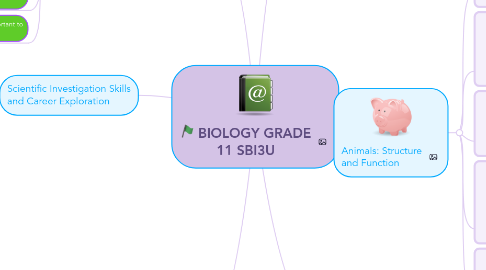BIOLOGY GRADE 11 SBI3U
создатель JASWINDER KAUR


1. Diversity of Living Things
1.1. analyse some of the risks and benefits of human intervention
1.2. genetic diversity, species diversity, structural diversity, protists, bacteria, fungi, binomial nomenclature, and morphology
1.3. classify, and draw biological diagrams of, representative organisms from each of the kingdoms
1.4. compare and contrast the structure and function of different types of prokaryotes, eukaryotes, and viruses
1.5. explain why biodiversity is important to maintaining viable ecosystems
2. Evolution
2.1. analyse the economic and environmental advantages and disadvantages of an artificial selection
2.1.1. extinction,natural selection, phylogeny, speciation, niche, mutation, mimicry, adaptation, and survival of the fittest
2.1.2. possible impact of an environmental change on natural selection and on the vulnerability of species
2.1.3. advantages and disadvantages of an artificial selection technology
2.2. research process to investigate some of the key factors in evolution
2.3. explain the fundamental theory of evolution, using the evolutionary mechanism of natural selection3
2.3.1. Essay exam
2.3.2. Oral exam
2.3.3. Multiple choice
2.4. natural selection, artificial selection, sexual selection, genetic variation, genetic drift, biotechnology
2.5. the key factors that affect the evolutionary
3. Scientific Investigation Skills and Career Exploration
4. Genetic Processes
4.1. analyse, on the basis of research, some of the social and ethical implications of research in genetics and genomics
4.2. haploid, diploid, spindle, synapsis, gamete, zygote, heterozygous, homozygous, allele
4.3. meiosis and crossing over
4.4. punnet squares
4.5. genetic disorders
4.5.1. E-learning
4.5.2. Student forum
